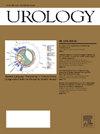The Genitourinary Medical Oncology Workforce in the United States
IF 2
3区 医学
Q2 UROLOGY & NEPHROLOGY
引用次数: 0
Abstract
Objective
To characterize the genitourinary medical oncology workforce in the United States.
Methods
Utilizing the top cancer hospitals as ranked by US News & World Reports, genitourinary medical oncologists in each state of the United States were identified. Data including gender, race/ethnicity, site of medical education, and site of clinical practice were collected.
Results
A total of 451 genitourinary medical oncologists are involved in clinical care in the United States. Of these medical oncologists, 399 (88.5%) practice in academic settings while 52 (11.5%) practice in community-based settings. 327 (72.5%) of genitourinary medical oncologists are male, while 124 (27.5%) are female. 17 (3.8%) genitourinary medical oncologists are from under-represented minority groups in medicine (Black, Hispanic, or Native American). 321 (71.2%) genitourinary medical oncologists received training at medical schools in the US, while 130 (28.8%) trained at medical schools abroad. The Northeast US has the most genitourinary medical oncologists with 150, followed by the South with 129, the West with 97, and the Midwest with 75. Of note, seven states, including Alaska, Delaware, Idaho, Maine, North Dakota, South Dakota, and Wyoming, have no identified genitourinary medical oncologist.
Conclusion
Disparities based off gender, race/ethnicity, and geographic location of practice exist in the genitourinary medical oncology workforce in the United States.
美国泌尿生殖医学肿瘤学工作人员。
目的:描述美国泌尿生殖医学肿瘤工作人员的特征。方法:利用美国新闻与世界报道排名前50的医院,确定美国各州的泌尿生殖医学肿瘤学家。收集的数据包括性别、种族/民族、医学教育地点和临床实践地点。结果:美国共有451名泌尿生殖医学肿瘤学家参与临床护理。在这些肿瘤内科医生中,399名(88.5%)在学术环境中执业,52名(11.5%)在社区环境中执业。327名(72.5%)泌尿生殖内科肿瘤学家为男性,124名(27.5%)为女性。17名(3.8%)泌尿生殖肿瘤学家来自医学上代表性不足的少数群体(黑人、西班牙裔或美洲原住民)。321名(71.2%)泌尿生殖医学肿瘤学家在美国的医学院接受培训,130名(28.8%)在国外的医学院接受培训。美国东北部拥有最多的泌尿生殖医学肿瘤学家,有150人,其次是南部129人,西部97人,中西部75人。值得注意的是,包括阿拉斯加州、特拉华州、爱达荷州、缅因州、北达科他州、南达科他州和怀俄明州在内的七个州还没有确定的泌尿生殖医学肿瘤学家。结论:基于性别、种族/民族和地理位置的差异存在于美国泌尿生殖系统医学肿瘤工作人员中。
本文章由计算机程序翻译,如有差异,请以英文原文为准。
求助全文
约1分钟内获得全文
求助全文
来源期刊

Urology
医学-泌尿学与肾脏学
CiteScore
3.30
自引率
9.50%
发文量
716
审稿时长
59 days
期刊介绍:
Urology is a monthly, peer–reviewed journal primarily for urologists, residents, interns, nephrologists, and other specialists interested in urology
The mission of Urology®, the "Gold Journal," is to provide practical, timely, and relevant clinical and basic science information to physicians and researchers practicing the art of urology worldwide. Urology® publishes original articles relating to adult and pediatric clinical urology as well as to clinical and basic science research. Topics in Urology® include pediatrics, surgical oncology, radiology, pathology, erectile dysfunction, infertility, incontinence, transplantation, endourology, andrology, female urology, reconstructive surgery, and medical oncology, as well as relevant basic science issues. Special features include rapid communication of important timely issues, surgeon''s workshops, interesting case reports, surgical techniques, clinical and basic science review articles, guest editorials, letters to the editor, book reviews, and historical articles in urology.
 求助内容:
求助内容: 应助结果提醒方式:
应助结果提醒方式:


